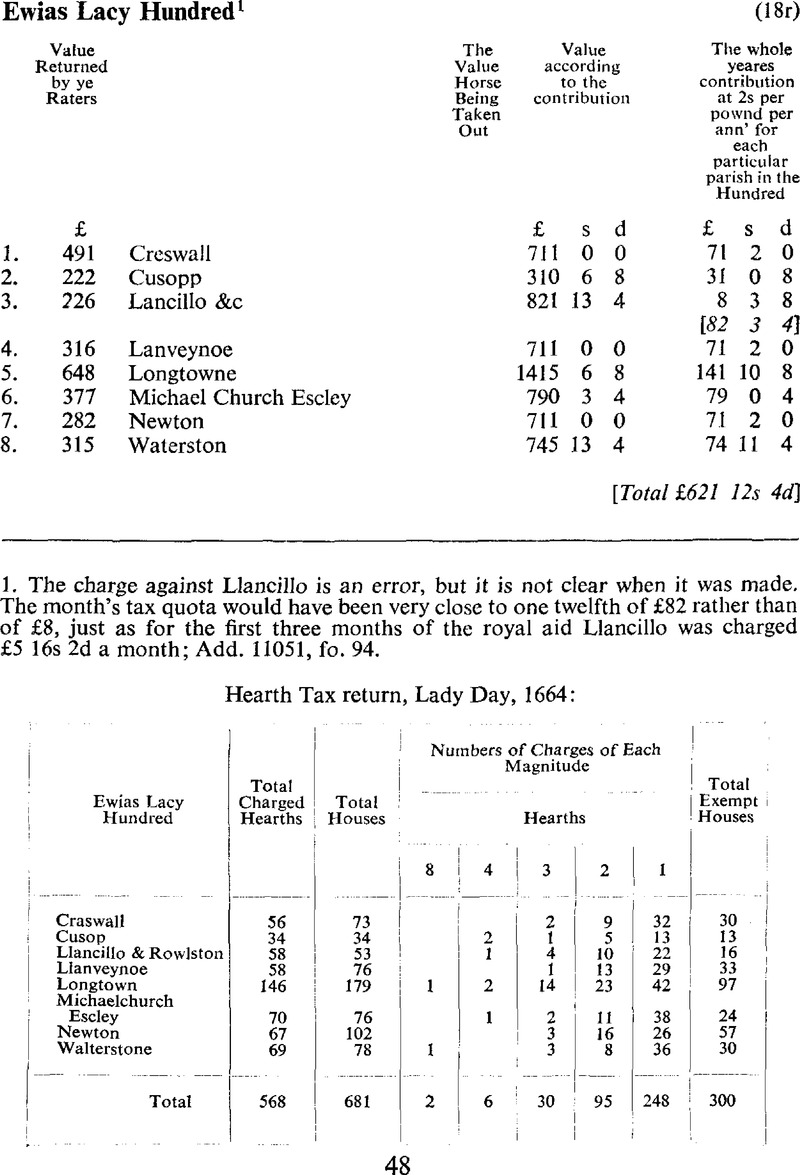No CrossRef data available.
Article contents
Abstract

- Type
- The Militia Assessments
- Information
- Camden Fourth Series , Volume 10: Herefordshire Militia Assessments of 1663 , July 1972 , pp. 48 - 56
- Copyright
- Copyright © Royal Historical Society 1972
Footnotes
The charge against Llancillo is an error, but it is not clear when it was made. The month's tax quota would have been very close to one twelfth of £82 rather than of £8, just as for the first three months of the royal aid Llancillo was charged £5 16s 2d a month; Add. 11051, fo. 94.
References
2. HT 1664 (3).
3. HT 1664 (3).
4. HT 1664 (4).
5. HT 1664 (4) with Watkin Griffith.
6. Included Rowlston, normally taxed with it.
7. Chief constable of Ewias Lacy, 1663; Loan 29/49, pf. 4, no. 69/15.
8. The two blanks in this assessment were queried in error; they precede two lists of tenants.
9. HT 1664 (4).
10. HT 1664 (3).
11. The estates of Lord Hopton, who died in 1652, were inherited by his four sisters; Complete Peerage, ed. Cokayne, G. E. (new edn., London, 1910–1940), vi, p. 577n.Google Scholar
12. HT 1664 (8).
13. ‘&c’ is probably the copyist's abbreviation of the previous narrative descriptions repeated.
14. HT 1664(4).
15. ‘&c’ may refer to Lord Hopton's coheirs.
16. Included St Margaret's.
17. Thomas Prosser of St Margaret's, nephew of Esay Presser of Peterchurch, whose will was proved 1666 (PCC).
18. The largest HT charges in 1664 were on John Miles (3), Thomas Jennings of Newhouse (3) and William James with Katherine Waters (3).
19. Probably included Bwlch and Fwthwg (Foothog).
20. HT 1664 (8).
21. William Cecil, 2nd earl of Salisbury, 1591–1668; Complete Peerage, ed. Cokayne, , xi, p. 406.Google Scholar




